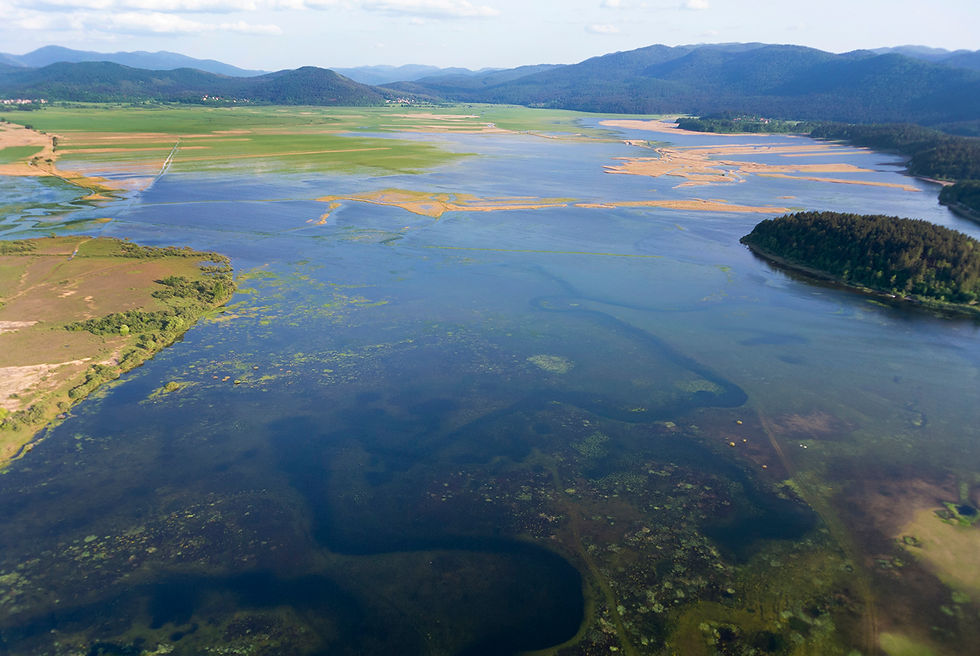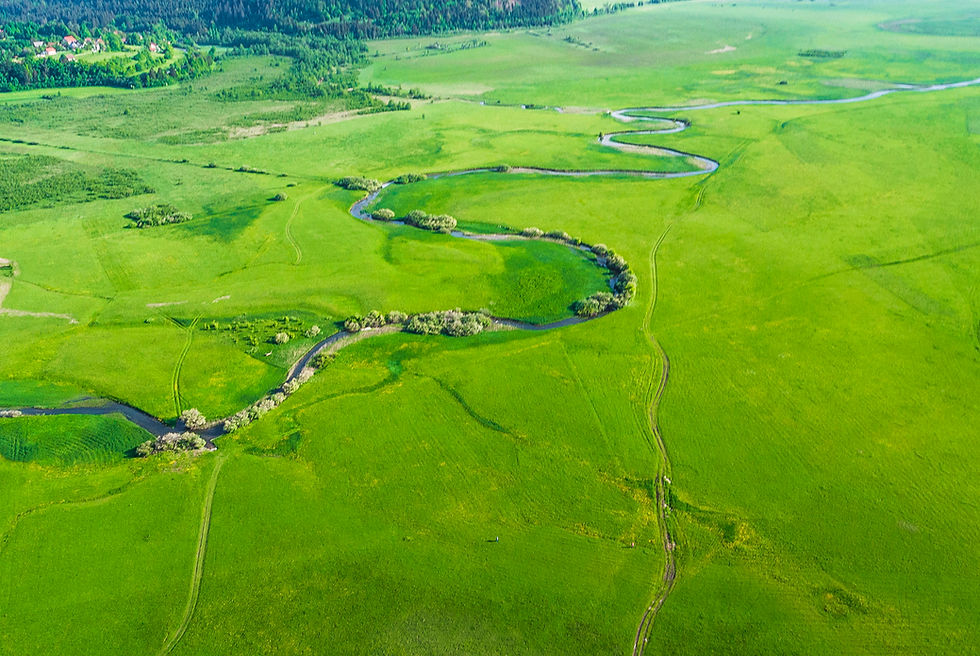Disappearing Lake Revisited
- kapjasa
- May 11, 2018
- 2 min read
Intermittent Lake Cerknica, that "miracle of nature" as Valvasor called it, never ceases to amaze. Now the lake is in the process of disappearing; its waters are retreating, lush meadows are emerging again and streams are returning to their meandering channels.

(Lake Cerknica from the west. In the foreground the meanders of Zerovniscica stream are starting to appear, in the back the lake already gave way to meadows.)
And everything is hastily growing, blooming, flowering. Semi-regular flood / draught rhythm in Cerknica polje creates an unique ecosystem where endangered plant species thrive so much it is hard to imagine they are really endangered ... Lake Cerknica is a top Natura2000 and Ramsar site, where 55 plants from the Red List of threatened species grow, one can find 7 different species of wild orchid here, and for horror buffs there are 3 different species of carnivorous plants.

(Lipsenjscica stream and its loops near Žerovnica village)
The disappearing trick Lake Cerknica pulls every late spring / early summer is due to karstic nature of Cerknica polje. Its limestone bedrock is permeable and porous, but only to an extent - if the inflow overwhelmes the caves and sinkholes, the waters cover the plain. At its largest Lake Cerknica can cover 28 square kilometers ... and a couple of months later it goes to zero.

(Vodonos sinkholes.)
This semi-regular flooding of Cerknica polje presents quite an interesting evolutional pressure on the local flora. Surviving a couple of months under water and then a couple under the scorching sun is a remarkable challenge. In the spring every plant rushes to bloom and the plain that used to be a lake is now green - so green it hurts your eyes.

(Wet meadows near Žerovnica. Yes, they are this green. No colour processing needed! ;-) ...)
It's immensely, extraordinarily beautiful.
Flowing a kite above Lake Cerknica is actually quite a feat. As this classic karst polje is surrounded by hills adn high plateaus, the wind is almost always blowing either too much, or not enough, or too turbulent, or from completely wrong direction.

(Rešeto sinkholes area and the road towards Otok (meaning "Island"), the only village in Slovenia that is actually on an island.)
This time even the wind cooperated. Apart from one minor airspace intrusion everything was perfect and we let Millie fly as far and as high as she wanted.
The first KAP session was in the eastern part, where waters were already gone and lush, unnaturally green meadows appeared, and Lipsenjscica stream was back in its looping channel.

The second session was from the northern shore, where water persists long in the summer, with Vodonos - "water-bearer" - sinkholes true to their name.

The third time we flew Millie above the extreme northwestern part, caled Rešeto - "the sieve" - where people once did fish harvesting (yes, this is the correct word; when waters retreated all the fish of the lake huddled in the last remaining water holes, so they were simply grabbed with sieves and transported on carts in immense quantities).

And the last tame we took parting views of the remains of the lake, looking east.

All photos taken with Nikon 1 J1 on Mille the french military kite.




























Comments